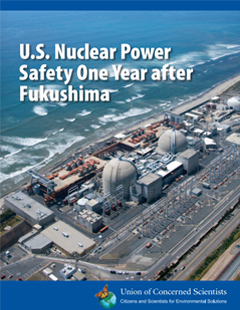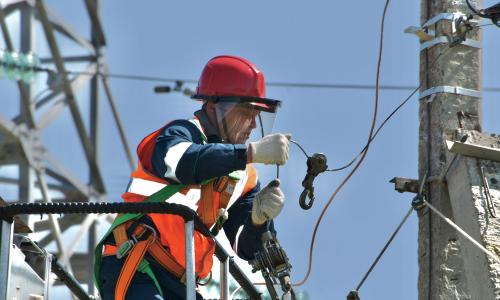On March 11, 2011, disaster struck Japan in the form of a monster earthquake and tsunami. In their wake came news of a third calamity: a "station blackout" at the Fukushima Dai-ichi nuclear power plant had disabled the plant's emergency cooling systems.
Over the ensuing weeks, plant workers fought heroically to bring the situation under control, but they were unable to prevent core meltdowns and hydrogen explosions that released radiation into a wide area around the plant, contaminating air, water and soil and displacing tens of thousands.
The Fukushima disaster did not directly affect the United States, but it has cast a long shadow over U.S. nuclear energy policy. A year later, are the lessons of Fukushima making U.S. nuclear power safer? This is the question that U.S. Nuclear Power Safety One Year After Fukushima seeks to answer.
Fukushima reactors similar to ours
The designs of the Fukushima reactors closely resemble those of many U.S. reactors. And while most U.S. reactors are not subject to the one-two punch of earthquake and tsunami that struck at Fukushima, they are vulnerable to other severe natural disasters—or to a terrorist attack, which could create similarly serious conditions. And the Fukushima disaster exposed several safety shortcomings that the damaged reactors share with their similarly designed U.S. counterparts.
NRC swings into action...
The initial response of the U.S. Nuclear Regulatory Commission (NRC) to the Fukushima tragedy was commendable. The agency handled a flood of inquiries from government officials, the media, and concerned citizens in a timely and responsive manner, and wisely erred on the side of caution in advising U.S. citizens to evacuate the area within 50 miles of Fukushima. It quickly established a task force to review the accident and identify measures to reduce vulnerabilities at U.S. reactors.
...But gets its priorities mixed up
The task force made 12 recommendations in its July 2011 report. Recommendation #1 was to clarify the current patchwork of regulatory requirements governing "beyond-design-basis" accidents—that is, accidents more severe than the reactor is designed to withstand. The task force considered this the most important recommendation because it provides a necessary foundation for the other 11.
In its plan to implement the task force's recommendations, however, the NRC decided to put this first and most important recommendation at the bottom of its priority list. The report notes that this decision "will likely only add more patches to the existing patchwork" and make it harder to implement the other recommendations consistently across all U.S. reactors.
Nuclear industry jumps the gun
While the NRC has been deliberating on how to implement the task force recommendations, the nuclear power industry has jumped into the breach, proposing what it calls the "Diverse and Flexible Coping Capability" program, or FLEX, as the foundation of its Fukushima response. The FLEX approach involves buying additional emergency equipment (such as pumps and generators) and scattering it in multiple locations to increase the likelihood that at least some of it would survive a severe accident.
This approach appeals to the industry because it is cheaper than hardening existing equipment against natural disasters; as one industry executive commented, "It's cheaper to buy three [pumps] than one and a heckuva big building [to put it in]." Some nuclear plants have already begun implementing the FLEX strategy, which could make it difficult for the NRC to impose higher standards which FLEX equipment might fail to meet. The industry tail may be wagging the regulatory dog.




